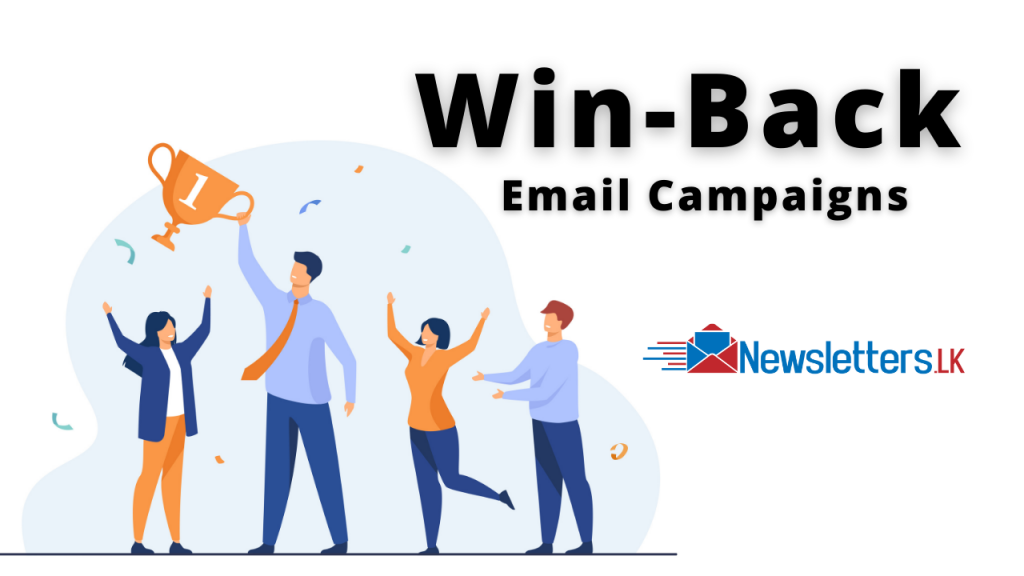
What is one of the simplest and most efficient ways for a company to boost revenue? By implementing win-back email campaigns.
Here’s why, as well as some suggestions to get you started.
Why Are Win-Back Campaigns So Effective?
Every marketer knows that keeping a customer is less expensive than acquiring a new one. How much less expensive, is it? Gaining new clients costs between 4 and 6 times more than keeping existing ones, depending on the business.
After all, you already have a relationship and level of trust with your present clients, so persuading them to buy from you needs far less effort than locating and courting brand new prospects.
The major benefit of win-back emails is that they encourage people to make repeat purchases. Think about it: If a customer makes one purchase and never makes one once again, or they used to purchase frequently and stopped, there must be a reason.
Whether they stopped buying because they replaced your product with a competitor’s, stopped using it altogether, or had a bad experience with your brand, a win-back email can help you speak directly to some of these concerns.
And that’s why win-back campaigns can make a huge impact on a company’s bottom line.
But why should you put your time and energy into creating win-back emails and trying to recoup past purchasers?
- The average open rate for win-back automations is over 29%.
- It costs five times as much to attract a new customer than to keep an existing one.
- 45% of subscribers who receive a win-back email will go on to open future emails from your brand.
Pro tip: Win-back emails can also increase customer lifetime value (LTV), or the amount of money someone spends with your brand in their lifetime.
Tips for Creating Effective Win-Back Email Campaigns
As you set out to create your own win-back email campaigns, here are eight key tips to increase customer retention and ensure success:
- Segment your email list.
In addition to how long a customer has been inactive, examples of other simple segments could include low- and high-value customers. If you’re aware of customers who had negative experiences, put them in another segment, as well.
Then, you can create a more relevant and engaging win-back email message for each group. To create win-back emails that both capture attention and generate more sales, get in touch with Us for more details regarding “email marketing list segmentation”.
- Remind them why they loved you in the first place.
You can accomplish this by demonstrating the value of your brands and products. In addition, highlight what’s new since they’ve last made a purchase.
- Don’t send just 1 email.
Develop a marketing strategy that involves sending a series of win-back emails over a period of time and that tests a variety of approaches to reengage your inactive subscribers.
In addition, find ways to integrate your email and social media marketing strategies to extend the reach of your campaigns. That’s why many marketers experiment with an email series—two or more win-back emails using time delays in between—in order to increase the odds, the recipient will open, engage, and hopefully, make their next purchase.
Tips for deciding how many emails to include:
- To gain the most out of your win-back series without risking your sending reputation, send 2-5 emails.
- Consider segmenting your win-back campaign series. For example, you could send out a single email to any subscribers who you consider inactive, then trigger a second and possibly third email to those who still haven’t made a purchase.
- If you notice revenue per recipient starting to drop after the first win-back email, that’s a good indicator that you can pull back on the number of emails you’re sending.
- Personalize the emails.
Leverage the customer data you’ve collected to personalize your e-commerce email campaigns. In addition to names, examples of collected customer data include demographic information, website browsing behavior, and purchase history.
When appropriate, create personalized win-back emails that cross-sell or upsell products based on customers’ previous purchases.
- Give them options.
Provide customers with an opportunity to customize their relationship with you by giving them options on how frequently they want to hear from you, as well as updates on their specific interests in terms of products and content.
- Provide an opportunity to give you feedback.
Why hasn’t a customer purchased from you in a while? Is there something you aren’t doing that would make a difference?
Give him or her a chance to tell you in your win-back series. It may yield valuable information about ways to improve your overall marketing strategy.
- Make them an offer they can’t refuse.
Win-back emails that included “$ off” discounts in the subject line had double the open rates compared to emails that included subject lines with “% off” discounts.
Furthermore, keep in mind that people are quickly trained to wait for the best deal. Save your sales incentives as a last-ditch effort (e.g., the third email in the series); that way, you won’t send a win-back email with a discount to a customer who was ready to buy anyway.
- Continuously test and optimize your win-back campaigns.
Besides optimizing copy and design elements, subject line, preheader, the sender’s email address, calls to action, and privacy policy, testing helps you find the most effective frequency, cadence, incentives, and timing of offers for your win-back series.
This is important for motivating action and boosting your engagement email metrics, including opens, clicks, and conversions.
Need help creating and implementing an effective win-back email campaign? Contact the email-marketing experts at http://newsletters.lk/ (or give us a call at 0725 550 550), and we’ll work with you to develop a winning win-back email strategy to reignite interest and connect with those customers and email subscribers you haven’t heard from in a while.
AUTHOR – Buddira Edirisooriya
